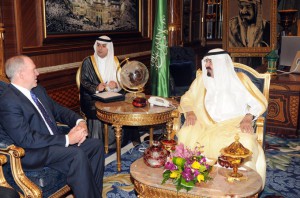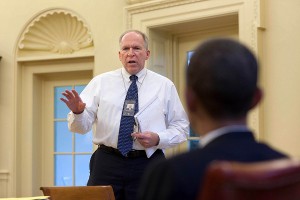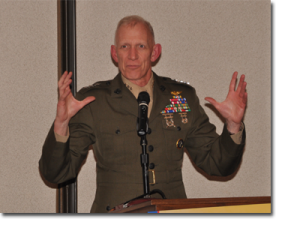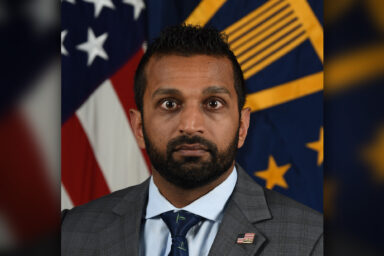Was The New Yorker’s gripping moment-by-moment account of the Abbottabad operation that killed Osama bin Laden great journalism—or the ultimate spin job?
UNEXPLAINED DISPUTES
It’s curious that the source chooses to emphasize the fundamental disagreement over whether the raid was a good idea. Presumably, there was a purpose in emphasizing this, but the New Yorker’s “tick-tock”, which is very light on analysis or context, doesn’t tell us what it was. It may have been intended to show Obama as brave, inclined toward big risks (thereby running counter to his reputation)—we can only guess.
 This internal discord will get the attention of anyone who remembers all the assertions from intelligence officials over the years that bin Laden was almost certainly already dead—either of natural causes or killed at some previous time.
This internal discord will get the attention of anyone who remembers all the assertions from intelligence officials over the years that bin Laden was almost certainly already dead—either of natural causes or killed at some previous time.
Here’s a bit more from The New Yorker on officials’ doubts going into the raid:
Several analysts from the National Counterterrorism Center were invited to critique the C.I.A.’s analysis; their confidence in the intelligence ranged between forty and sixty per cent. The center’s director, Michael Leiter, said that it would be preferable to wait for stronger confirmation of bin Laden’s presence in Abbottabad.
Those doubts are particularly interesting for several reasons: the CIA has had a long history of disputes between its covert action wing, which tends to advocate activity, and its analysis section, historically prone to caution. The action wing also has a history of publicizing its being right—when it could purport to be right—and covering up its failures. So when an insider chooses to make public these disagreements, we should be willing to consider motives.
This dispute can also be seen as an intriguing prologue to the rush to dump Bin Laden’s body and not provide proof to the public that it was indeed bin Laden. What if it wasn’t bin Laden that they killed? Would the government announce that after such a high-stakes operation? (“While we thought he’d be there, we accidentally killed someone else instead”? Seems unlikely.)
***
Now, let us go to the next antechamber of this warren of shadowy entities and unstated agendas.
 Who exactly wanted bin Laden shot rather than taken alive and interrogated—and why? There’s been much discussion about the purported reasons for terminating him on sight, but the fact remains that he would have been a source of tremendous intelligence of real value to the safety of Americans and others.
Who exactly wanted bin Laden shot rather than taken alive and interrogated—and why? There’s been much discussion about the purported reasons for terminating him on sight, but the fact remains that he would have been a source of tremendous intelligence of real value to the safety of Americans and others.
Yet, early in the piece, Schmidle writes:
If all went according to plan, the SEALs would drop from the helicopters into the compound, overpower bin Laden’s guards, shoot and kill him at close range, and then take the corpse back to Afghanistan.
That was the plan? Whose plan? We’ve never been explicitly told by the White House that such a decision had been made. In fact, we’d previously been informed that the president was glad to have the master plotter taken alive if he was unarmed and did not resist. So, that’s a huge and problematical discrepancy that is only heightened by Schmidle’s misleadingly matter-of-fact treatment of the matter.
GET ME RIYADH
If the justification for killing Osama presented in The New Yorker warrants concern, the account of how—and why—they disposed of his body ought to send alarm bells clanging.
At the time of the raid, the decision to hastily dump Osama’s body in the ocean rather than make it available for authoritative forensic examination was a highly controversial one—that only led to more speculation that the White House was hiding something. The justifications, including not wanting to bury him on land for fear of creating a shrine, were almost laughable.
So what do we learn about this from The New Yorker? It’s truly bizarre: the SEALS themselves made the decision. That’s strange enough. But then we learn that Brennan took it upon himself to verify that was the right decision. How did he do this? Not by speaking with the president or top military, diplomatic or legal brass. No, he called some foreigners—get ready–the Saudis, who told him that dumping at sea sounded like a good plan.
Here’s Schmidle’s account:
All along, the SEALs had planned to dump bin Laden’s corpse into the sea—a blunt way of ending the bin Laden myth. They had successfully pulled off a similar scheme before. During a DEVGRU helicopter raid inside Somalia in September, 2009, SEALs had killed Saleh Ali Saleh Nabhan, one of East Africa’s top Al Qaeda leaders; Nabhan’s corpse was then flown to a ship in the Indian Ocean, given proper Muslim rites, and thrown overboard. Before taking that step for bin Laden, however, John Brennan made a call. Brennan, who had been a C.I.A. station chief in Riyadh, phoned a former counterpart in Saudi intelligence. Brennan told the man what had occurred in Abbottabad and informed him of the plan to deposit bin Laden’s remains at sea. As Brennan knew, bin Laden’s relatives were still a prominent family in the Kingdom, and Osama had once been a Saudi citizen. Did the Saudi government have any interest in taking the body? “Your plan sounds like a good one,” the Saudi replied.
Let’s consider this. The most wanted man in the world; substantive professional doubts about whether the man in the Abbottabad house is him; tremendous public doubts about whether it could even be him; the most important operation of the Obama presidency; yet the decision about what to do with the body is left to low-level operatives. Keep in mind SEALs are trained to follow orders given by others. They’re expected to apply what they know to unexpected scenarios that come up, but the key strategic decisions— arrived at in advance—are not theirs to make.
Even more strange that Brennan would discuss this with a foreign power. And not just any foreign power, but the regime that is inextricably linked with the domestically-influential family of bin Laden—and home to many of the hijackers who worked for him.
Is it just me, or does this sound preposterous? Obama’s Homeland Security and Counterterrorism adviser is just winging it with key aspects of one of America’s most important, complex and risky operations? And the Saudi government is the one deciding to discard the remains of a man from one of Saudi Arabia’s most powerful families, before the public could receive proper proof of the identity of the body? A regime with a great deal at stake and perhaps plenty to hide.
Also please consider this important caveat: As we noted in a previous article, the claim that the body had already been positively identified via DNA has been disputed by a DNA expert who said that insufficient time had elapsed before the sea burial to complete such tests.
 The line about Brennan himself having been a former CIA station chief in Saudi Arabia is just sort of dropped in there. No recognition of what it means that a person of that background was put into that position after 9/11, no recognition that a person of that background and those fraught personal connections is controlling this narrative. He’s not just a “counterterrorism expert”—he is a longtime member of an agency whose mandate includes the frequent use of disinformation. And one who has his own historic direct links to the Saudi regime, a key and problematical player in the larger chess game playing out.
The line about Brennan himself having been a former CIA station chief in Saudi Arabia is just sort of dropped in there. No recognition of what it means that a person of that background was put into that position after 9/11, no recognition that a person of that background and those fraught personal connections is controlling this narrative. He’s not just a “counterterrorism expert”—he is a longtime member of an agency whose mandate includes the frequent use of disinformation. And one who has his own historic direct links to the Saudi regime, a key and problematical player in the larger chess game playing out.
 It’s relevant to note that Brennan is not only a career CIA officer (they say no one ever really leaves the Agency, no matter their new title) but one with a lot of baggage. He was deputy director of the CIA at the time of the 9/11 attacks. He was an adviser to Obama’s presidential campaign, after which Obama initially planned to name him CIA director. That appointment was pulled, in part due to criticism from human rights advocates over statements he had made in support of sending terrorism suspects to countries where they might be tortured.
It’s relevant to note that Brennan is not only a career CIA officer (they say no one ever really leaves the Agency, no matter their new title) but one with a lot of baggage. He was deputy director of the CIA at the time of the 9/11 attacks. He was an adviser to Obama’s presidential campaign, after which Obama initially planned to name him CIA director. That appointment was pulled, in part due to criticism from human rights advocates over statements he had made in support of sending terrorism suspects to countries where they might be tortured.
Of course, there could have been other sources besides Brennan. In addition to the unnamed “counterterrorism official” previously cited, the New Yorker mentions a “special operations officer,” as in:
…according to a special-operations officer who is deeply familiar with the bin Laden raid.
Subsequent quotes from him indicate that this had to be a supervisory special ops officer. His comments are surprising:
“This wasn’t a hard op,” the special-operations officer told me. “It would be like hitting a target in McLean”—the upscale Virginia suburb of Washington, D.C.
Whoops! Here’s a Special Ops guy saying the Special Ops raid was actually no big deal! Shouldn’t that, if a valid assessment, get more attention? Especially given the endless praise and frequent statements of how difficult the operation was. I mean, the toughness and diciness of the Abbottabad mission is the prime reason we want to read the New Yorker’s account in the first place!
To further underline the point, consider that this fellow is not alone in his assessment:
In the months after the raid, the media have frequently suggested that the Abbottabad operation was as challenging as Operation Eagle Claw and the “Black Hawk Down” incident, but the senior Defense Department official told me that “this was not one of three missions.”…. He likened the routine of evening raids to “mowing the lawn.”
Why would a person overseeing an operation like this deflate the bubble of adoration? It doesn’t seem helpful to the interests of Special Operations – and it doesn’t seem credible, either. So there’s presumably a reason that this person is—again speaking to The New Yorker after this important exclusive has been carefully considered and strategized. We just don’t know what it is, and the magazine doesn’t even bother to wonder.
***
Most of the other sources seem to play bit roles. One is “a senior adviser to the President” whose only comment is that Obama decided not to trust the Pakistanis with advance notice of the raid—which we already knew. Another— named—source is Ben Rhodes, a deputy national-security adviser, who does not evince any intimate knowledge of the raid itself.
The New Yorker also includes a few other officials who brief Schmidle on general background, like a “senior defense department official” explaining the overall relationship between Special Operations and CIA personnel, and a named former CIA counsel explaining that the Abottabad raid amounted to “a complete incorporation of JSOC [Joint Special Operations Command] into a C.I.A. operation.”
That’s only slipped into the article, but it is perhaps one of the most important aspects of the piece, along with a brief mention of the way in which former Iraq/Afghan commander General David Petraeus has gone to CIA while CIA director Panetta has been made Defense Secretary. (For more on these important but confusing games of high-level musical chairs, which were not deeply scrutinized in the conventional media, see our WhoWhatWhy pieces here and here.)
This may sound too technical for your taste, but the takeaway point is that fundamental realignments are afoot in that vast, massively-funded, powerful and secretive part of the US government that is treated by the corporate press almost as if it does not exist. The tales of internal intrigue that we do not hear would begin to provide us with the real narratives that are not ours to have.
In the New Yorker piece, we do learn lots of things we did not know before—for example, that Special Ops considered tunneling in or coming in by foot rather than helicopter. We learn that Secretary of Defense Robert Gates wanted to drop massive bombs on the house. General James Cartwright, vice chairman of the Joint Chiefs of Staff, shared that view—Cartwright is one of the few who is directly identified as a source for Schmidle. That’s important stuff, and worth more than brief mention. And, once again, we need more effort to try and understand why we are being told these things.
.kjhkljh
We know—from feedback—that readers like you love these stories.
Want to help us expand quickly and do more of them, on more topics?
Please click here to donate and support our work.
Remember—it’s tax deductible. And it packs a punch.



